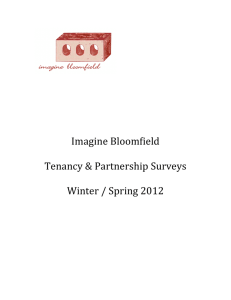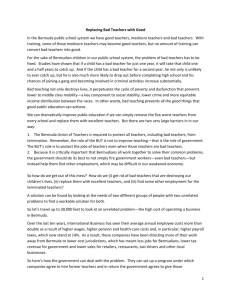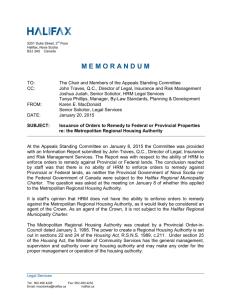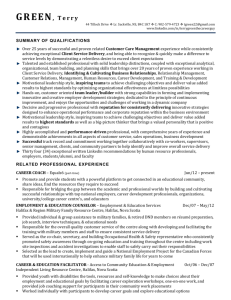REPORT - Global History and Culture Centre Research Fund Kirsten Greer Activities:
advertisement
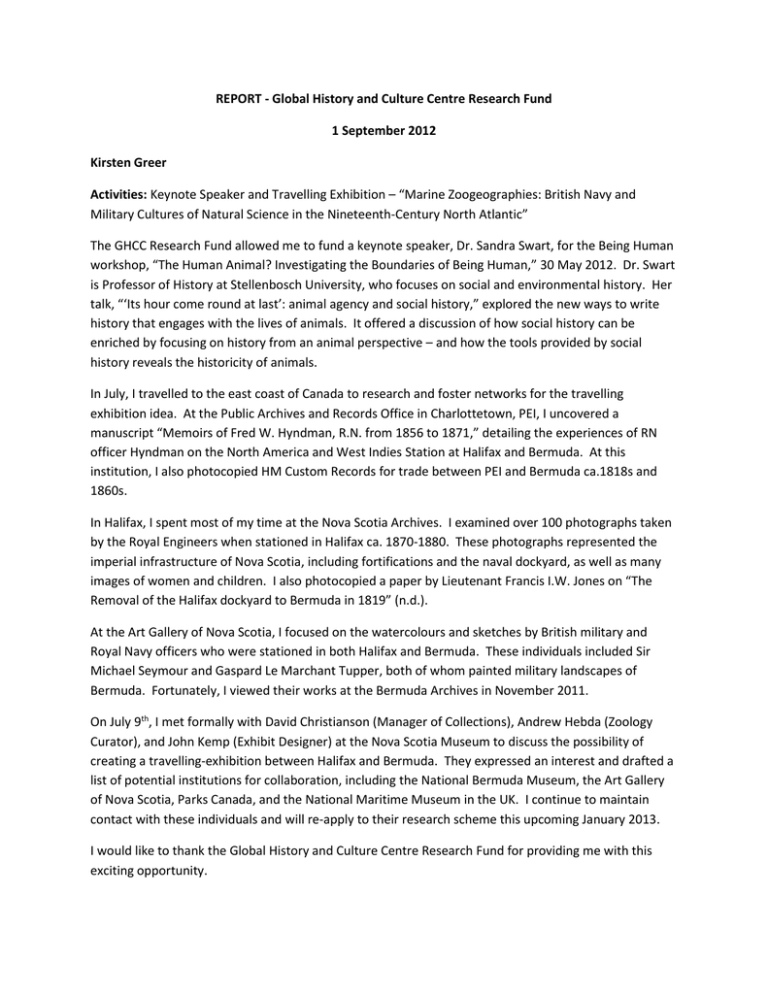
REPORT - Global History and Culture Centre Research Fund 1 September 2012 Kirsten Greer Activities: Keynote Speaker and Travelling Exhibition – “Marine Zoogeographies: British Navy and Military Cultures of Natural Science in the Nineteenth-Century North Atlantic” The GHCC Research Fund allowed me to fund a keynote speaker, Dr. Sandra Swart, for the Being Human workshop, “The Human Animal? Investigating the Boundaries of Being Human,” 30 May 2012. Dr. Swart is Professor of History at Stellenbosch University, who focuses on social and environmental history. Her talk, “‘Its hour come round at last’: animal agency and social history,” explored the new ways to write history that engages with the lives of animals. It offered a discussion of how social history can be enriched by focusing on history from an animal perspective – and how the tools provided by social history reveals the historicity of animals. In July, I travelled to the east coast of Canada to research and foster networks for the travelling exhibition idea. At the Public Archives and Records Office in Charlottetown, PEI, I uncovered a manuscript “Memoirs of Fred W. Hyndman, R.N. from 1856 to 1871,” detailing the experiences of RN officer Hyndman on the North America and West Indies Station at Halifax and Bermuda. At this institution, I also photocopied HM Custom Records for trade between PEI and Bermuda ca.1818s and 1860s. In Halifax, I spent most of my time at the Nova Scotia Archives. I examined over 100 photographs taken by the Royal Engineers when stationed in Halifax ca. 1870-1880. These photographs represented the imperial infrastructure of Nova Scotia, including fortifications and the naval dockyard, as well as many images of women and children. I also photocopied a paper by Lieutenant Francis I.W. Jones on “The Removal of the Halifax dockyard to Bermuda in 1819” (n.d.). At the Art Gallery of Nova Scotia, I focused on the watercolours and sketches by British military and Royal Navy officers who were stationed in both Halifax and Bermuda. These individuals included Sir Michael Seymour and Gaspard Le Marchant Tupper, both of whom painted military landscapes of Bermuda. Fortunately, I viewed their works at the Bermuda Archives in November 2011. On July 9th, I met formally with David Christianson (Manager of Collections), Andrew Hebda (Zoology Curator), and John Kemp (Exhibit Designer) at the Nova Scotia Museum to discuss the possibility of creating a travelling-exhibition between Halifax and Bermuda. They expressed an interest and drafted a list of potential institutions for collaboration, including the National Bermuda Museum, the Art Gallery of Nova Scotia, Parks Canada, and the National Maritime Museum in the UK. I continue to maintain contact with these individuals and will re-apply to their research scheme this upcoming January 2013. I would like to thank the Global History and Culture Centre Research Fund for providing me with this exciting opportunity. Sincerely, Kirsten Greer


